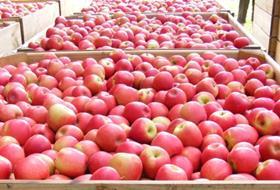
A USDA GAIN Report has suggested the investment made in converting New Zealand apple orchards to Enza’s proprietary variety Jazz is stalling the pursuit of new trade opportunities.
Jazz was initially considered as a potential saviour for the New Zealand industry, with growers rushing toplant the variety in the mid-2000s as a potential successor to Braeburn.
But the report, which described the apple as basically “an updated version of Braeburn”, said Jazz has suffered some of the same limitations in terms of its tarter taste profile, which makes it difficult to sell in Asia.
While Jazz now accounts for 11 per cent of New Zealand’s planted apple area, the report claimed returns are in decline, with growers and exporters left to bear the brunt.
“The initial cost to replant with Jazz and the subsequent decline in returns has depleted many smaller growers’ financial reserves which now has the effect of slowing down the capacity of the sector to respond quickly to the opportunities for supply in Asia and the Middle East,” the report said.
“The larger integrated growing, packing, and shipping companies are not really interested in Jazz because, being a club variety, they must relinquish the post-harvest control of the fruit to Enza, whichholds the worldwide rights.”
Figures released in the report show plantings for Jazz have been in decline for the past two years, with growers diversifying into Royal Gala sports (such as Galaxy), Pacific Queen and new cultivars such as Envy, Ambrosia, Rockit and HoneyCrisp.
Despite the report’s claims, Jazz has begun to establish a niche following in several markets in Asia over recent years, most notably South East Asian markets such as Thailand as well as in Japan. It’s growing popularity in the region – albeit off a low base – appears to reflect changing demands in Asia, which are breaking out of the stereotypical ‘sweet fruit’ mould. It also indicates that Jazz is inherently sweeter than the ‘tart’ tag in the report suggests, and fruit can be selected and stored to meet the requirements of various Asian markets.
According to the report, a biennial bearing “on” year has increased New Zealand’s overall production to 519,000 tonnes, an 8 per cent year-on-year rise.
As a result, apple exports are expected to rise by 10 per cent, while the industry remains hopeful the average per carton return will be higher than last year’s figure of NZ$22.71 (US$18.29). A shortage of apples in European markets, coupled with the ongoing rise in demand from Asia, has fuelled cautious optimism.
However, the report noted that market access issues continue to encumber trade in the Asian region overall, with Pipfruit New Zealand now committing some 75 per cent of its efforts and funding to market access.



